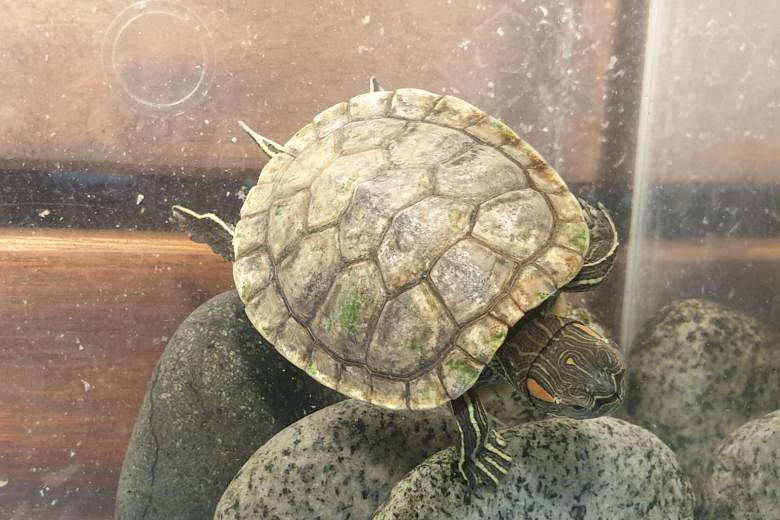Why are there bald patches on my Singapore Special?
My seven-year-old Singapore Special has developed bald patches on both flanks and around the thighs of his hind legs over the last three to four months.
He is on a diet of cooked pork and rice and is eating and behaving normally. We switched to a hypoallergenic kibble diet for three weeks but it did not help. We are not sure if the cause of the hair loss is related to food, parasites or the environment.
Please advise on the best course of treatment.
Kartik Niverthi
Dr Juline Chua: Hair loss in dogs can be due to various reasons, some of which you have mentioned.
Other possible reasons include frequent scratching or skin infection caused by bacteria, yeast, fungus or parasites. It could also be due to hormonal or metabolic abnormalities, allergies and nutritional deficiencies such as a lack of minerals, proteins or vitamins.
A veterinarian should be consulted to determine the underlying reason for this.
The vet will be able to conduct tests required to diagnose medical conditions that could cause the hair loss, such as skin and blood tests.
Depending on the findings, your vet may recommend further steps for determining the cause of your dog's hair loss, such as allergy testing, parasite prevention or specialised skin, blood and urine tests.
Please note that it may take some time and repeated visits to the vet for your dog to show improvements from some of these conditions. It is important to remain patient and maintain open communication with your vet.
When visiting your vet, it would help to give details of your pet's medical history. This includes visits and treatments administered at other vet clinics, past parasite treatments, your pet's current diet, as well as shampoo or topical creams or solutions that are being used.
Red-eared slider's mouldy shell
I have a two-year-old red-eared slider. While other terrapins in pet shops have smooth shiny shells, my terrapin has a mouldy-looking shell with black edges.
I have set up my tank with a basking area but he does not seem to want to use it. I have not detected any foul smell from the shell and he seems quite active. What are the treatments available for his shell?
Emily Leong
Dr Shawn Chia: Discolouration of a slider's shell may be due to several reasons. But the most common reason is a bacterial or fungal infection, or sometimes both, known as "shell rot".
Shell rot often arises due to a compromised immune system function that stems from water quality and hygiene issues, as well as inadequate husbandry conditions.
This includes dirty water or an unclean enclosure. Other symptoms of shell rot include cracks in the shell, an uneven shell surface or even discharge from parts of the shell.
Treatment and prevention of shell rot requires a combination of medical intervention, such as the use of antiseptics, antibiotics and antifungals to combat the infection, and husbandry modifications to ensure that your slider remains in optimal health.
As it looks like the discolouration of your slider's shell is fairly widespread, it is recommended that you consult your veterinarian for medical treatment of shell rot.
In the meantime, here are some tips for a slider's housing environment:
- Water should be kept clean by frequently changing it and having sufficient filtration. Remove any leftover food as this will lead to bacterial and algal growth in the tank.
- Provide a warm, dry docking area with direct unfiltered sunlight where your slider can bask. Unfiltered sunlight is crucial in preventing mineral deficiencies.
- Provide good quality and nutritionally balanced aquatic turtle pellets.
The Science of Animal Assisted Interventions Webinar

What: Animal experts Aubrey Fine and Nancy Gee talk about animal-assisted therapy and how pets can benefit people's well-being
When: March 25, 12.30 and 8pm
Admission: Free
Info: Sign up for the limited slots at this website.
Write in
Have a query about your pet? E-mail it with clear, high-resolution pictures of at least 1MB, if any, and your full name to stlife@sph.com.sg. We reserve the right to edit and reject questions.
Answers by veterinarians from the Animal & Veterinary Service of the National Parks Board, Dr Shawn Chia and Dr Juline Chua.

